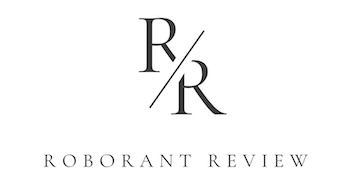Cornelius Völker, Heart to Heart, Hosfelt Gallery
By Hugh Leeman
In 1965, the year Cornelius Völker was born in Kronach, Germany, across the German countryside, Gerhard Richter was writing in a notebook about a distinct recurring visual element in his paintings: "I blur things to make everything equally important and equally unimportant… so that they do not look artistic or craftsmanlike but technological, smooth, and perfect. Perhaps I also blur out the excess of unimportant information." Six decades later, Völker carries Richter's blur into a new era. What once explored neutrality and an erasure of authorship and emotion, in Völker's Heart to Heart at Hosfelt Gallery, the effect reflects on touch, materiality, and perception in a world saturated by digital technology’s images, translating Richter's postwar blur for the age of algorithms and screens.
The excess of unimportant information Richter referred to in his art before the advent of the internet has since become the norm, burying us under an avalanche of information, pushing the historical power of painting past the threshold of obsolescence. Yet the physical nature of viscous paint and Völker's wet-on-wet techniques in constrained space continue to capture attention through conveying the increasingly rare experience of seeing something handmade. Völker's blurring brushstrokes become a countercurrent to internet immediacy, evoking the essence of a glitch in the digital matrix, which has conditioned society to see reality on a screen. Here, the artist's blur counters the subject matter, pushing our eyes to search for visual stability amidst illusion.
In the search across the canvas and through the exhibits' paintings, illusion and reality blur as the viewer's eyes bounce back and forth between the painter's effects. The imagery conveyed in his subject matter is always a dancing glance of the brush past realism, venturing into the painterly. Through the materiality of his paint and bold colors, Völker recalls Édouard Manet’s painterly accents, bridging realism and Impressionism, which helped manifest modern art in the 19th century. Völker's brushstrokes move from representation and abstraction to optical distortion, challenging the very nature of seeing. What could be more apt for a painter in our digital world?
(L) Vase, 2025, oil on canvas, 70 7/8 x 47 1/4 in (R) Vase, 2025, oil on canvas, 78 3/4 x 51 1/8 in
The artist situates his subject matter between classical observation and post-digital consciousness informed through layers of art history. In pieces titled Vase, flattened perspectives, tight framing, and a luminous contrast of saturated light reflect the attention-capturing visuals of social media. Völker's use of these effects transmits a play of the internet's illusion, allowing the ancient medium of paint to breathe from a grave the internet helped dig. The artist's subject matter draws inspiration from 17th-century Dutch floral still life, often depicted at the height of beauty, which symbolically prognosticated on the fragility of the wealth of the Golden Age's expanding capitalist economy. In Völker's still life, we are past the point of prognostication, standing at the threshold of consumer culture’s decay; petals have come undone, their stems bend impotently.
Beyond Gerhard Richter's painterly blur effect, Völker's Zwei Kerzen (Two Candles) references Richter's renowned candles series, here sharing its title with Richter’s 1982 piece. Richter began painting candles that he noted were only intended to look pretty, though he shared that they did evoke contemplation on memory, yet later they came to be interpreted as a protest against East Germany's oppressive Communist government. Richter's candles, once tall, have been reduced to short nubs by Völker, leaving us to the final moments of blurred flames. What was once intended to look pretty and later came to be seen as honoring cultural memory through protest in Völker’s hands evokes feelings of a 21st-century society at the threshold of darkness and the dimming of collective memory.
(L) Kalbskopf (Calf’s Head), 2025, oil on canvas, 39 3/8 x 31 1/2 in (R) Vase, 2025, oil on canvas, 59 x 39 3/8 in
The exhibit's disparate subject matter forms a transgressive network, each piece a node in a greater system of communication. Calf's Head and yet another Vase connect death with life and the permanence of plastics. The flower's cellophane reflects our age of packaged consumption as light bends through the vase's water, creating visual refraction that plays with perception.
(L) Bonbons-Herzen (Sweets-Hearts), 2025, oil on canvas, 31 1/2 x 39 3/8 in (R) Zwei Herzen (Two Hearts), 2025, oil on canvas, 35 3/8 x 51 1/8 in
Bon-Bons Herzen (Sweet Hearts) plastic wrappers contrast the sweet candies, to be consumed in minutes, with the bitter reality that their wrappers will last for multiple lifetimes, a dear price for a moment of pleasure. The artist, a vegetarian, pushes the viewer further into the depths of contemplating the human condition of consumption through Zwei Herzen (Two Hearts). The candies' cutesy hearts in sugar become that which was taken from an animal's chest, the vital organs' brushstrokes re-creating the fleshy soft tissue's elasticity, reminding us this meat once moved.
Völker's Heart to Heart pulls us in for an intimate conversation on the fleeting essence of desire, perception, and humans' ancient obsession with triumphing over nature. While 17th-century still life meditated on humans' worship at the altar of consumption, Völker's possess the potential to act as a vehicle for redemption from a world of immediacy, presenting painting as a critical technology of materiality that contemplates the ethics of seeing. As the artist challenges viewers to have a heart-to-heart, he reminds us of paint’s ability to blend illusion with reality and leave us with questions on the blurred nature of perception.










